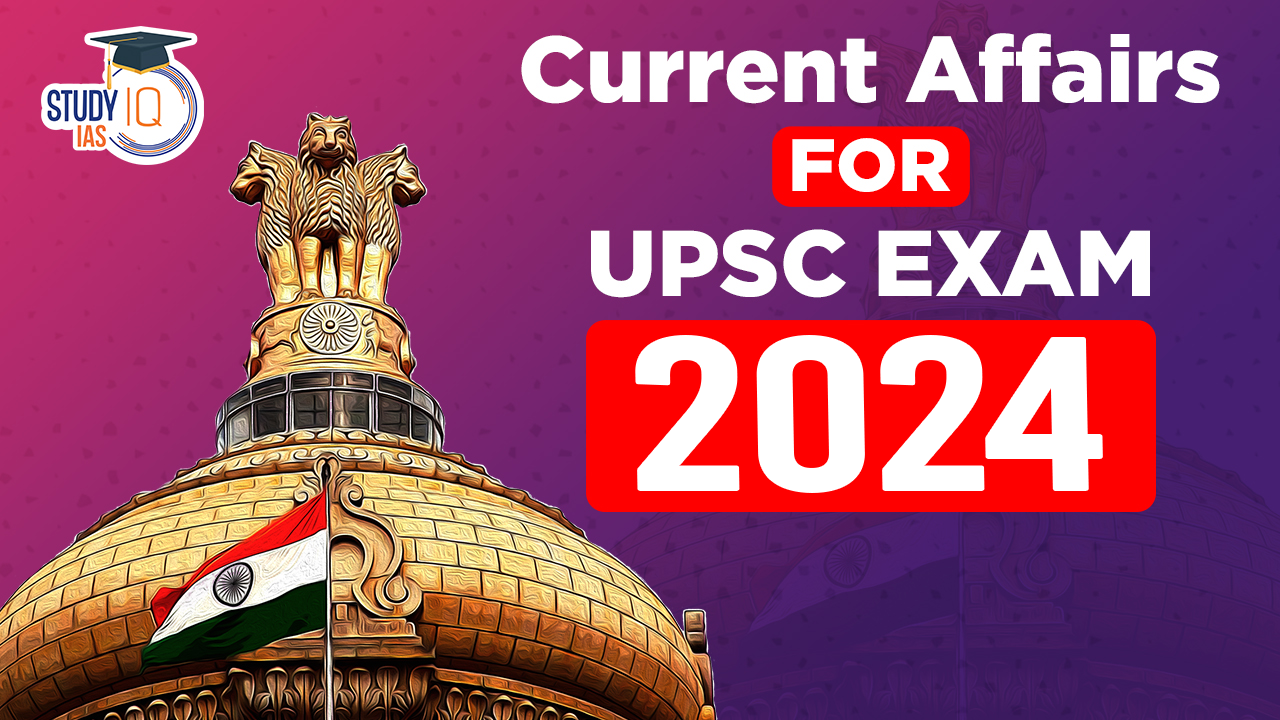Table of Contents
Wetland City Accreditation
Context: Recently, Ministry of Environment, Forest, and Climate Change (MoEF&CC) has nominated Indore, Bhopal, and Udaipur for Wetland City Accreditation (WCA) under the Ramsar Convention on Wetlands.
About Wetland City Accreditation
- Adoption of Wetland City Accreditation: In 2015, during COP12.
- Recognition of Proactive Cities: The system acknowledges cities that actively protect their urban wetlands.
- Valuing Urban Wetlands: The initiative underscores the significance of wetlands in urban and surrounding areas, advocating for their preservation.
- International Acknowledgment: Cities committed to wetland preservation can receive global recognition and positive media attention through this program.
- Conservation and Benefit Promotion: The accreditation encourages the safeguarding and sustainable use of urban and peri-urban wetlands, aiming to enhance local well-being.
- Criteria for Accreditation: Cities must meet six specific international criteria outlined in the Ramsar Convention’s Operational Guidance for Wetland City Accreditation.
- Current Status: Since Ramsar COP13, 43 cities across 17 nations have achieved the “Wetland City” title.
We’re now on WhatsApp. Click to Join
| Ramsar Sites In |
|
PRERANA Program
Context: Recently, the Ministry of Education launched ‘Prerana: An Experiential Learning Program’.
About PRERANA Program
- About: This initiative is a seven-day immersive residential experience focusing on heritage and innovation, where participants engage in hands-on learning enriched by advanced technology.
- Who Can Apply: The program is open to students in the 9th to 12th grades from any nationally recognized school.
- Application Methodology: Students may apply online by submitting required information or participate in School/block-level selections during ‘Prerana Utsav’ through relevant activities.
- District Representation: Each district will select one male and one female student to join the Prerana program.
- Composition: Every week, 20 students, equally split between boys and girls, from various regions will attend the program.
- Historical Venue: Sessions are hosted at a historical Vernacular school in Vadnagar, Gujarat, with the distinction of being PM Modi’s alma mater.
- Designed by: IIT Gandhinagar.
- Activities:
- Daily Itinerary: Participants engage in daily wellness practices like yoga, alongside interactive and theme-based educational activities.
- Cultural Evenings: Students visit historical sites, watch motivational movies, and partake in talent showcases during evening programs.
- Significance:
- Diverse Experiential Learning: The agenda includes a variety of activities that combine local wisdom, state-of-the-art technology, and lessons from motivational leaders.
- Community Impact: Attendees are expected to bring the program’s values back to their hometowns, sparking positive community shifts and motivating their peers.
- Educational Philosophy Integration: The program aims to meld Indian educational principles with the values outlined in the NEP 2020, promoting a holistic educational approach.
PRITHvi Vigyan (PRITHVI) Program
Context: The Union Cabinet has approved the “PRITHvi VIgyan (PRITHVI)” scheme for ease of research in earth sciences.
About PRITHVI Program
- About the Scheme: This initiative is a holistic program focused on exploring and understanding the five key components of the Earth system to improve Earth System Sciences and provide dependable services nationally.
- Aim:
- Persistent monitoring of Earth’s atmospheric, oceanic, geological, frozen, and biological elements.
- Development of models for accurate predictions of meteorological, marine, and climatic conditions.
- Investigation of polar regions and oceans for new findings and resources.
- Advancement of technologies for the responsible extraction and application of ocean resources.
- Conversion of Earth System Sciences discoveries into practical benefits for society, environment, and economy.
- Nodal Ministry: The Ministry of Earth Science is the scheme’s governing body.
- Duration: From 2021 to 2026.
- Integration: The scheme encompasses and refines five pre-existing initiatives:
- ACROSS: Focuses on climate research and predictive modelling.
- O-SMART: Dedicated to the responsible harnessing and technological innovation of marine resources.
- PACER: Investigates Earth’s polar and frozen environments to enhance climate change understanding.
- SAGE: Committed to advancing seismic monitoring and geological studies.
- REACHOUT: Aims to bridge the gap between research and societal services while promoting education and training in the field.
Mayurbhanj’s red ant chutney
Context: Recently, Odisha’s Similipal kai chutney made with red weaver ants received the geographical identity tag.
About Mayurbhanj’s Red Ant Chuntney
- Regional Delicacy with Health Benefits: In Mayurbhanj, a unique savoury chutney renowned for its medicinal qualities is integral to the nutritional well-being of the tribal communities.
- Sourcing of Ingredients: Tribespeople from the Mayurbhanj district gather kai pimpudi (red weaver ants) from adjacent forests for culinary use.
- Tribal Livelihood: Approximately 500 tribal households sustain themselves by harvesting and commercialising these insects and their derivative chutney.
- Health Benefits:
- Research on red weaver ants reveals they are a source of essential nutrients such as proteins, calcium, zinc, vitamin B-12, iron, magnesium, potassium, sodium, copper, and amino acids, which are known to enhance immunity and ward off illnesses.
- Tribal medicine practitioners create a therapeutic oil by infusing the ants in pure mustard oil, utilised after maturation for a month.
- This ant-infused oil is traditionally employed as a remedy for ailments in infants, rheumatism, gout, ringworm, and other conditions among the tribal population.
- Consumption of the red weaver ant chutney is a common practice among locals for maintaining health and vigour.
Room Temperature Superconductivity
Context: Scientists from China and Japan have recently observed indications of superconductivity in a material known as LK-99, previously disputed for its claims of exhibiting superconductive properties at room temperature and pressure (RTP).
About Superconductors
- Definition: Superconductors are materials that, upon reaching superconductivity, exhibit zero electrical resistance and completely expel magnetic fields.
- In these materials, an electric current can flow continuously without loss or decay.
- Practical Applications: Superconductors are highly valuable in various applications; for instance, they are essential in MRI machines due to their perfect diamagnetic properties (known as the Meissner effect), as discovered by Walther Meissner and Robert Ochsenfeld in 1933.
- Temperature Limitation: Superconductivity typically requires extremely low temperatures to be achieved and maintained.
Room Temperature Superconductor
- Superconductors that operate at room temperature (i.e. 20–22 °C (68–72 °F))
- Advantages:
- Lowering expenses for electricity grids, computer processors, magnetic levitation train magnets, energy storage systems, and fusion reactors, primarily by cutting down on cooling costs.
Bio-Credits
Context: Biodiversity credits or bio credits are increasingly being pushed as a means for financing work on the various targets set under the Kunming-Montreal Global Biodiversity Framework (KMGBF) adopted in 2022 at the 15th Conference of Parties (CoP15) of Convention on Biological Diversity (CBD).
About Bio-Credits
- Proposed as part of the Kunming-Montreal Global Biodiversity Framework, bio-credits are financial tools designed to finance biodiversity conservation and restoration goals.
- They function similarly to carbon credits, generating revenue through the sale of credits, which is then allocated to conservation efforts.
- The Biodiversity Credit Alliance, established during the 15th Conference of Parties (COP15) of the Convention on Biological Diversity in 2022, plays a pivotal role in advocating for bio-credits.
- Additionally, initiatives like the Ocean Conservation Commitments also support the adoption and utilisation of bio-credits.


 Securities Markets Code Bill 2025: Towar...
Securities Markets Code Bill 2025: Towar...
 Weakly Interacting Massive Particles (WI...
Weakly Interacting Massive Particles (WI...
 India–Oman Trade Deal: CEPA Signed to ...
India–Oman Trade Deal: CEPA Signed to ...

























